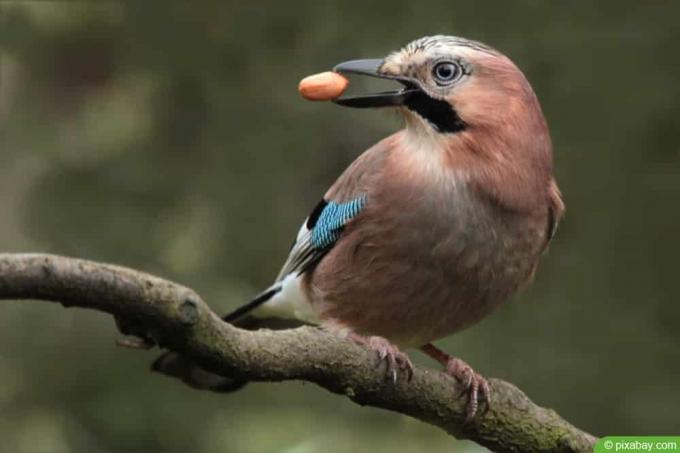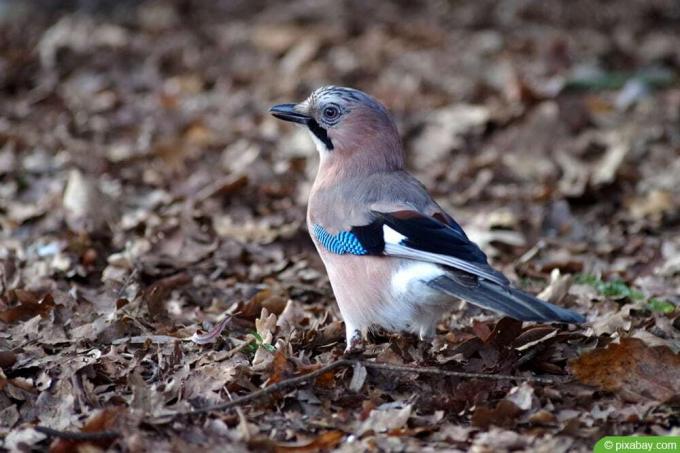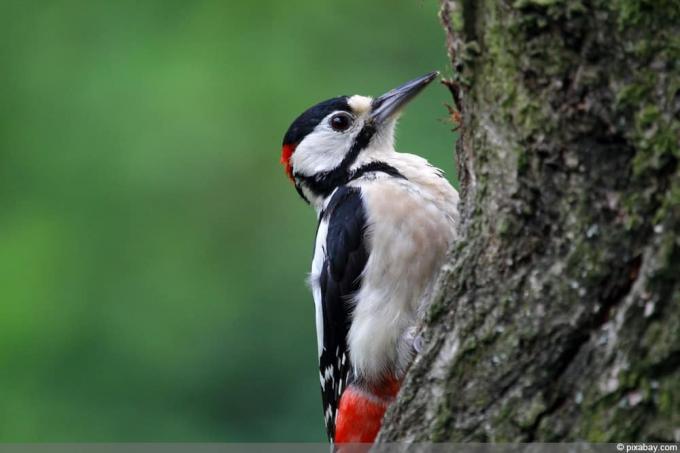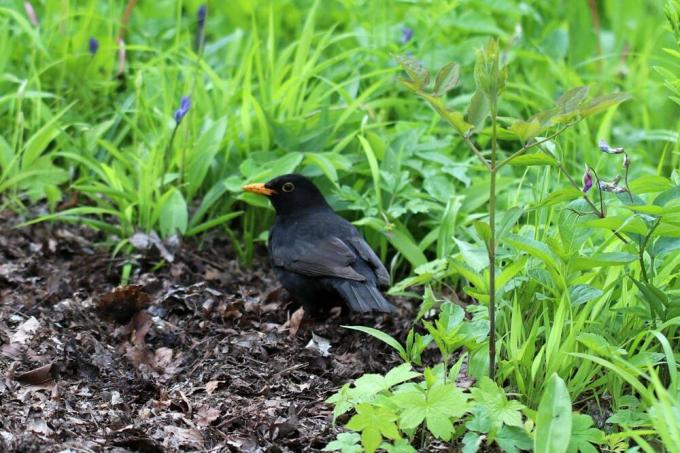

Table of contents
- The Jay's Diet
- Animal Food Sources
- Vegetable food
- Effects on winter forage supplies
- When should you feed at all?
Birds, which do not leave Germany even in winter, are repeatedly dependent on food from human hands due to extremely low temperatures, as well as ice and snow. The jay is one of these birds. In order for the feeding to actually fulfill its purpose, knowledge about the natural food of the animals is an indispensable basic requirement. With our help, you too will be able to offer these interesting and versatile garden dwellers the right food supply.
The Jay's Diet
Generally speaking, the jay is considered to be a very versatile animal when it comes to its diet. While other bird species are highly specialized in one food source, they make a variety of different offerings from their habitat their own. He does not scorn either animal food or plant-based alternatives.
Animal Food Sources
Animal food sources are primarily used to supply energy-rich proteins. They are rather rare and mostly available during the warmer months:
- insects
- Beetle
- larvae
- worms
- snails
- mice
- "Nestlings" (young birds)
- bird eggs
INFO:
The eating of young birds and bird eggs sometimes results from the fact that the raven is active as a nest robber and systematically clears out the clutches of other songbirds.
Vegetable food
Vegetable sources, on the other hand, often offer starch and sugar. These offers are usually available on a longer-term basis and are usually the only natural reserves that the birds can fall back on in the winter.
- acorns
- nuts
- beechnuts
- Berry
- apples
- Corn
- Grain
Info:
In addition to the best possible supply from our domestic resources, the jay's wide range of foods fulfills another important function. Since the intelligent bird tends to hide nuts in a wide variety of places as a winter reserve, it also contributes to the spread and reproduction of the resulting trees. Because, like squirrels, there is not always a guarantee that the bird will actually find and use its depots again.
Effects on winter forage supplies

For you as a potential food supplier, the feeding repertoire of the jay is ultimately very easy work. You can, of course, combine all the components already mentioned as you wish, subject to availability, without having to make any special effort or even make special purchases. Because many things from your own kitchen are ideal as feed for the animals:
- Oatmeal or other cereals
- apples, pears
- nuts
- raisins
- Corn
- Any acorns and other seeds from the garden
If you are thinking of collecting acorns, seeds and other things from your own garden for winter fodder and set aside until needed, remember that the birds use these very things as a source of food require. Therefore, never remove all acorns or nuts, otherwise the winter food supply will be at the expense of the birds' self-sufficiency in summer or autumn. Especially during the breeding season and rearing of the young, the jay, like the other animals, is dependent on a particularly plentiful supply of food.
When should you feed at all?
Normally, the birds that overwinter with us are very well able to take care of themselves. The situation is different, however, when the remaining food supply is running out or simply cannot be reached in particularly long winters or in the event of heavy snowfall. In these cases, it can actually make sense to supplement the food supply in the home garden, which is usually not equivalent to nature anyway, with specifically offered sources.
 garden editorial
garden editorial I write about everything that interests me in my garden.
Learn more about breeding seasons

Great spotted woodpecker, woodpecker: profile, food and breeding season
The great spotted woodpecker is a beautiful bird. Its plumage is contrastingly colored black, white and red. But the unmistakable trademark is his drumming. It is the most common species of woodpecker in this country. He feels comfortable almost everywhere, sometimes even in the garden.

Blue tit, Parus caeruleus - profile, breeding season and food/food
One of the most striking songbird species is the blue tit. Her singing has a high recognition value. It is drawn to cities as well as to the countryside and its breeding behavior continues to promise a species of bird that is not threatened with extinction for the time being. Everything you should know about blue tits can be found in the Hausgarten-Journal.

Thrush, Turdus - profile, food, breeding season + difference to the blackbird
The thrush "Turdus", also known as the real thrush, comes from the thrush family and is one of the best-known and most widespread bird species in Europe. It has some differences to the blackbird and stands out due to certain behavioral patterns and characteristics. You can find out what the true thrush is and how it lives in the Hausgarten animal journal.

Blackbird, Turdus merula - profile, breeding season and food in winter
The blackbird "Turdus merula", also called black thrush, belongs to the thrush family. In Europe and especially in Germany, it is extremely widespread. It is not only because of its size that it stands out from the other thrush species. You can find out all the details of the Turdus merula from the home garden experts.

Wren – profile, breeding season and information about food
Such a loud voice is hardly to be expected from a small bird like the wren, making it a very special species of its species. Its singing fills entire gardens, bringing a touch of nature even to the densely populated city. In the home garden knowledge portal you can find out everything about the topic of wrens.

Robins - fact sheet with pictures, breeding season and food
The robin or Erithacus rubecula is a welcome guest in the garden. No wonder, because the communication between the birds is impressively versatile, the red-throated animals are useful in pest control and are simply pretty to look at. So many good reasons to welcome them to your own green.
